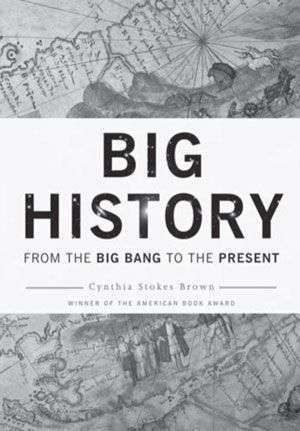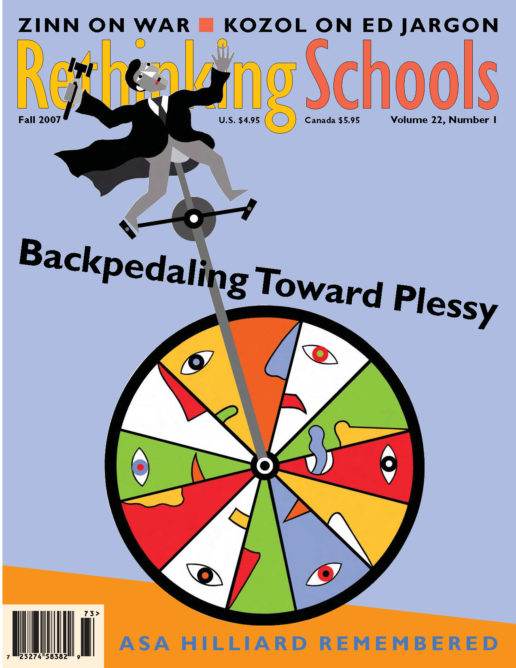Good Stuff 22.1

Big History: From the Big Bang to the Present
By Cynthia Stokes Brown
(New Press, 2007)
304 pages, $25.95
The Bomb
By Theodore Taylor
(Harcourt Paperback, 2007)
200 pages, $6.95
Cynthia Brown has written a book that few sane people would ever attempt. Big History claims to be a 304-page romp through the history of the universe from the Big Bang to the 21st century. Actually, it is earth-centric; about 30 pages are devoted to the universe. The rest of Big History focuses on the history and development of human life on the earth. That’s no small task and Brown does it remarkably well.
This book is the only history survey book I know that respects the horizontal as well as the vertical aspects of history. It is resolutely non-Eurocentric. Every chapter looks across the planet and considers societies in Asia, Africa, the Americas, as well as Europe.
Big History is a marvelous source for teachers of children of all ages, but as a school text, it requires that students read with comfort. One bonus the book provides is that every chapter ends with what Brown calls “unanswered questions.” These questions provide yeast for the development of curriculum material, class discussions and research, and a world historical sensibility that is rare in social studies classes these days.
Big History is not without its flaws. As with any epic tome that delves into 10,000 years of history, many things are left out. The book tries to be as objective as possible and not take a political position. This is both positive and negative. Positive because there are so many interesting things to chew on and digest and negative because the author decided what is significant and worth putting into her narrative, which necessarily excludes most of the narratives of most of the people on earth. This does not take away from the value of the book but is a caveat: This is a romp through history, not the intimate and complex story of the complex life of people on earth.
I feel that Big History should be read and used, but within an understanding that there are different ways to interpret the flow of historical events. Often what is left out of the book is as significant as what is included. For example, there is no mention of the 1946 removal of native people from the Bikini Atoll in the Pacific in order to explode nuclear bombs. This story is beautifully told by Theodore Taylor in is his novel for young people, The Bomb, originally published in 1995 and recently re-issued. It is wonderful and sad reading but does have an additional importance: the removal of the entire population of Bikini was a model for the removal of the entire native population of the island of Diego Garcia by Britain and the United States in order to create the largest U.S. military base in the Indian Ocean. That base is a jumping off point for military action in Africa, the Middle East, and Asia. Recently the High Court in London ruled that the native people have a right to return to Diego Garcia. However, the ruling is, unsurprisingly, on appeal. Taylor’s book is worth reading as a way to begin to study the U.S. military presence and interference in world affairs.

